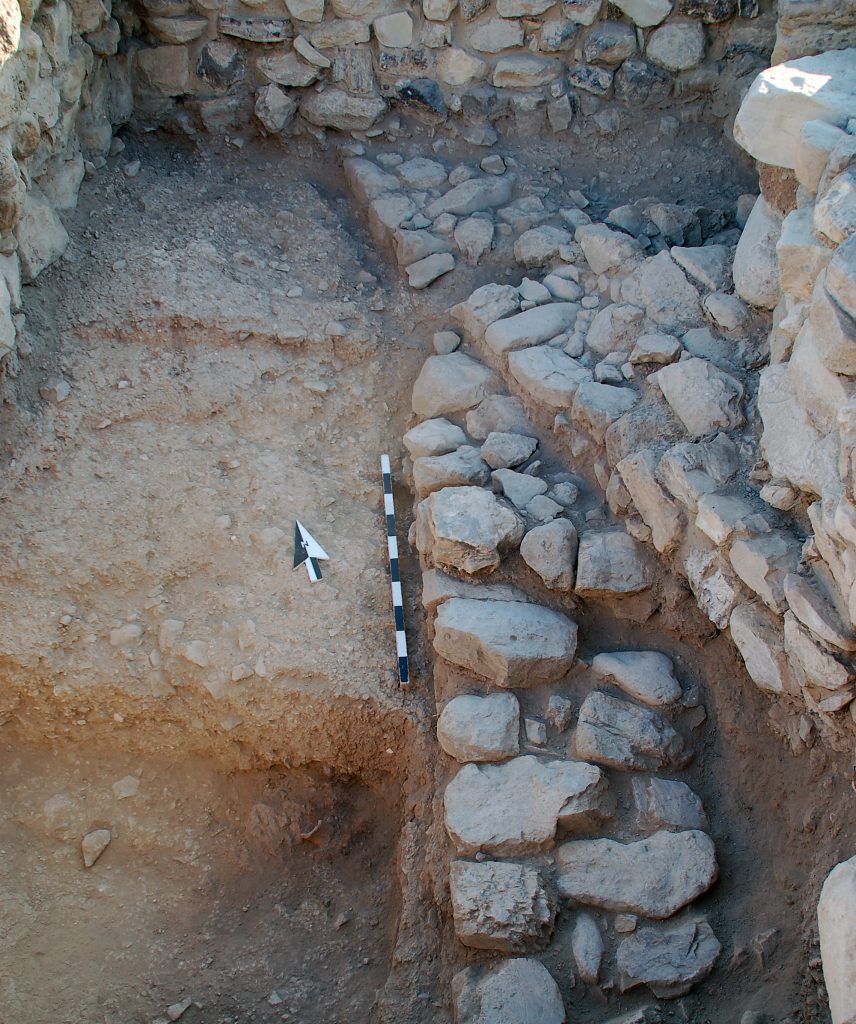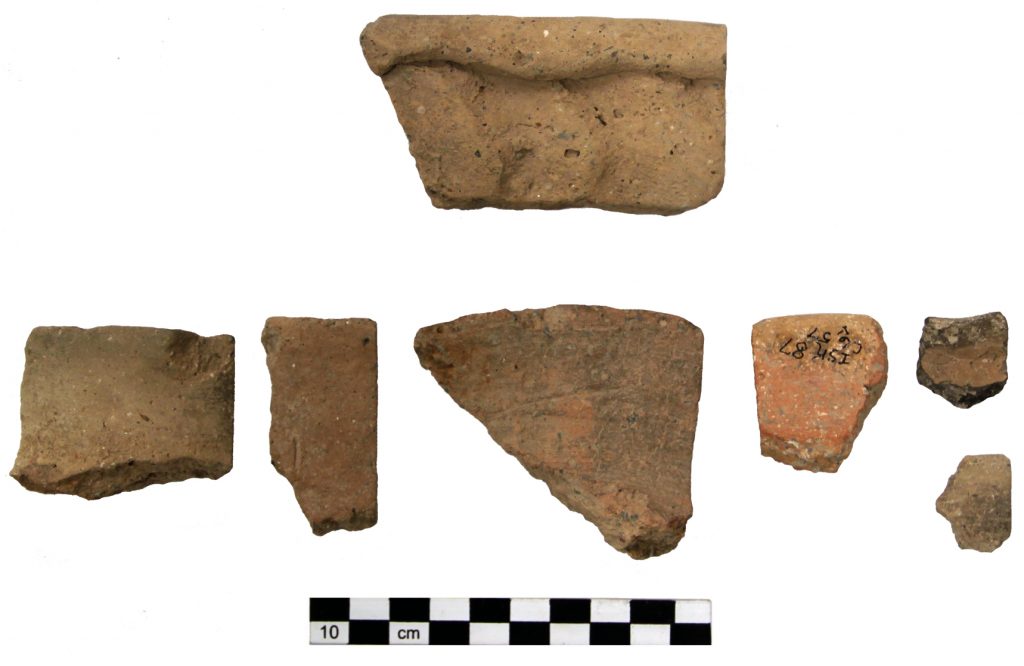Rethinking the Southern Levantine Early Bronze IV after a Century of Archaeological Investigation

By: Marta D’Andrea
Societal collapse has always been intriguing. For this reason scholars have been attracted to the Early Bronze IV of the Southern Levant (EB IV, ca. 2500-1950/1920 BCE) since the early 20th century. The EB IV is sandwiched between the collapse of the first cities at the end of EB III (ca. 2500 BCE) and the regeneration of urban society in the succeeding Middle Bronze Age (MBA, 1920-1550 BCE), when new cultural elements – generally connected with the Amorites – took the leading role in the entire Levant. This position saw EB IV as a “Dark Age” of social, political and economic collapse and technological regression. Lately, renewed interest in the EB IV has been fuelled by new discoveries, which allow for substantial re-evaluation of this still elusive period.
Archaeological evidence available for EB IV between the 1950s and the 1980s suggested that radical changes took place in the southern Levant after the collapse of the first cities. The presence of small unfortified villages in place of the fortified sites of the EB II-III periods, the fact that cemeteries outnumbered settlements, and the fragmentation of material culture, with several coexisting repertoires of pots and weapons distributed over limited areas, led scholars to conclude that mobility and nomadism rather than sedentism characterized the period. The diffusion of cultural influence from still urbanized Syria, inferable from the spread of cups and goblets inspired by northern prototypes across the southern Levant, was also taken as proof that people were moving, whether refugees, invaders, or pastoralists.
Map of the Southern Levant during the EB IV. Courtesy Marta D’Andrea.
Southern Levantine cups and goblets (graphic re-elaboration by the author from several sources; M. D’Andrea, The Southern Levant in Early Bronze IV. Issues and perspectives in the pottery evidence. CMAO XVII, Roma, pls XVII:2, 9, XVIII:9-10, 12-13, XIX:7-8, XXI:10-11, 16, XXVIII:1-2, 7-8).
The EB IV was portrayed as a non-urban interlude after the failure of the first urban experiment, which, suddenly at the dawn of the 2nd millennium BCE, made way for the revival of urbanism, likely diffusing from more sophisticated Syria.
But intense field research from the 1980s to the present has revealed a myriad of sedentary EB IV rural villages both east and west of the Jordan River. Rather than a “Dark Age” of decline and recession, the southern Levantine EB IV was a complex phase in which rural components were fundamental. Early research separated phases based on stylistic differences between the ceramic assemblages of different sub-regions. Subsequently, several sites – including Tell Umm Hammad, Tell Abu en-Ni‘aj, Khirbat Iskandar, Bab edh-Dhra‘, Jericho, and, recently, Tell el-Hammam – revealed multiple EB IV strata and evidence for an evolutionary sequence.

EB IV superimposed architecture over EB III mudbrick destruction (courtesy of the Khirbat Iskandar Expedition), end ofseason.

EB IV superimposed architecture over EB III mudbrick destruction (courtesy of the Khirbat Iskandar Expedition), end ofseason.

Pottery from the first EB IV phase (Phase 1) identified in Area C at Khirbat Iskandar, Jordan, corresponding to early EB IV in the author’s periodization (courtesy of the Khirbat Iskandar Expedition).
Based on this new evidence, scholars have made arguments for the existence of elites and for the social development and technological experimentation, as well as for continuity with the following MBA. Finally, recent studies on ancient landscape, vegetation and climate demonstrated that there were cyclical episodes of aridification between 2500 and 1900 BCE that might have influenced settlement patterns and developments in the southern Levant during EB IV.
My argument builds on new research that reconstructs a progression, from crisis to recovery and growth. Building on the hypothesis that changes in pottery manufacturing techniques observable from one EB IV sub-phase to the next might be used for inter-site correlation, I attempted to piece together the archaeological evidence from different sites and areas, re-examining the published record from almost 150 sites. The study was boosted by first-hand analysis of EB IV pottery in museums and universities and the opportunity to expose more of the long EB IV sequence at Khirbat Iskandar, working with Suzanne Richard, from Gannon University, and Jesse Long, from Lubbock Christian University.
EB IV pottery in situ in Area B at Khirbat Iskandar, Jordan, corresponding to the central EB IV phase at the site (courtesy of the Khirbat Iskandar Expedition) season.

EB IV pottery from Area B at Khirbat Iskandar, Jordan, corresponding to the central EB IV phase at the site (courtesy of the Khirbat Iskandar Expedition) season.

EB IV multifunctional complex (“gateway”) in Area C at Khirbat Iskandar, Jordan (courtesy of the Khirbat Iskandar Expedition).
Based on my re-evaluation, I proposed that there was an early EB IV stage of crisis after the downfall of the EB II-III urbanization, a factor likely accounting for its low visibility in the archaeological record. The ephemeral nature of this early EB IV phase might reflect discontinuities, such as the establishment of short-lived settlements shifting from one place to another. The material culture of this archaic EB IV phase seems rather poor, pointing to technological regression and domestic manufacture, possibly mirroring changes in the socio-economic preconditions behind production.
In my interpretation, from a central EB IV stage, a process of continuous recovery and reorganization led to a final phase of growth, which gradually blended down into a transitional Early-Middle Bronze phase towards the end of EB IV. The beginning of renewed development from the central EB IV phase is suggested by the establishment of a network of well-planned sedentary rural villages, interacting with mobile components specializing in several activities in different areas, such as pastoralism, trade, and crafts. Specialized craft production, with the systematic use of the slow potters wheel, and copper mining, smelting, and trade, were resumed. The circulation of these products suggests that interactions between different regions and agricultural-pastoral communities were at work. Elements of “complexity” also began to appear throughout the southern Levant, indicated by the presence of multifunctional “public” areas, and “warrior” burials with metal weapons and ornaments. New styles in material culture point to local interpretation of foreign elements.
Drawing of EB IV Tomb L2 at Jericho, with deployment of metal weapons and ornaments within the burial (redrawn by the author after K.M. Kenyon, Excavations at Jericho II, London 1965, fig. 79).
The big picture emerging from the archaeological data for the central and late EB IV phases of sedentary rural communities dynamically interacting with semi-nomads in an organized manner, based on specialization of economic activities. It was during these phases that regional and inter-regional connections were gradually re-established, which fuelled the diffusion of technology, styles and cultural information from the neighboring areas. Although the central and late EB IV stages were non-urban, it seems likely that the first seeds of the MBA urban regeneration were sown during these phases.
Thus, research over the last three decades has deeply changed our understanding of the southern Levantine EB IV, bringing into sharper focus the existence of the internal developments, from crisis to recovery and growth. So far this is mostly understood in terms of relative phases within a six-century-long period. The refinement of an absolute chronology for EB IV phases is a priority, linking stratigraphy at individual sites, ceramic phases, and absolute dates from scientific methods.
Many questions remain. Did the Early Bronze Age urban crisis occur at the same time and pace at every site and region? When did recovery first start and did it occur simultaneously throughout the region? How do these patterns connect with climatic oscillations between 2500-1900 BCE? And how does the southern Levant during EB IV connect with neighboring areas, such as Egypt, the Lebanon, and Syria, for which absolute chronologies are more refined? These and many more compelling questions might be answered by chronological revisions. Unveiling synchronisms will eventually shed light on the social, political and economic intricacies of the southern Levantine EB IV that we are not able to grasp due to the lack of written sources.
Marta D’Andrea is a research fellow at Sapienza University of Rome, Italy, and a co-director of the Archaeological Expedition to Khirbat Iskandar and Its Environs, Jordan and the Madaba Regional Archaeological Museum Project, Jordan.
~~~
All content provided on this blog is for informational purposes only. The American Schools of Oriental Research (ASOR) makes no representations as to the accuracy or completeness of any information on this blog or found by following any link on this blog. ASOR will not be liable for any errors or omissions in this information. ASOR will not be liable for any losses, injuries, or damages from the display or use of this information. The opinions expressed by Bloggers and those providing comments are theirs alone, and do not reflect the opinions of ASOR or any employee thereof.
For Further Reading
M. D’Andrea, The Early Bronze IV Period in South-Central Transjordan: Reconsidering Chronology through Ceramic Technology, Levant 44/1, pp. 17-50.
M. D’Andrea, The Southern Levant in Early Bronze IV. Issues and perspectives in the pottery evidence. Contributi e Materiali di Archeologia Orientale XVII, Sapienza Università di Roma, Rome.
S. Richard, J.C. Long Jr, P.S. Holdorf, and G. Peterman, Khirbat Iskandar. Final Report on the Early Bronze IV Area C ‘Gateway’ and Cemeteries. ASOR Archaeological Report Series 14, Boston, MA.